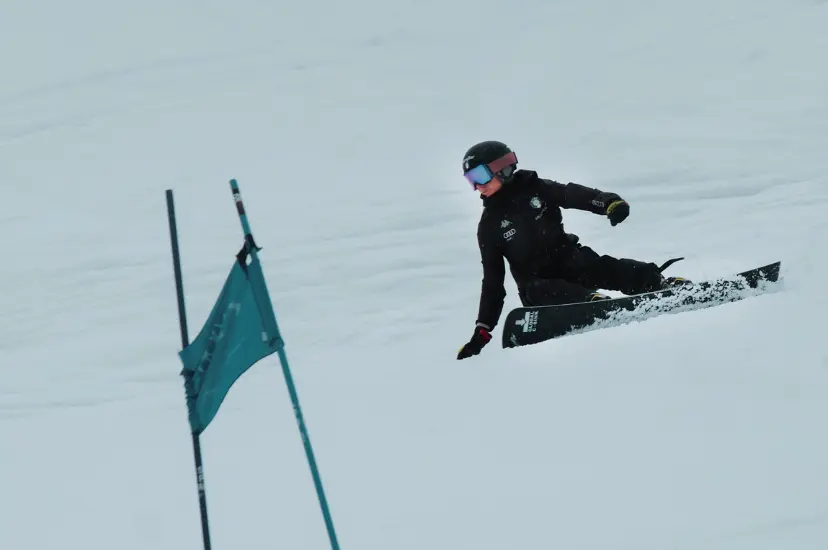
Global C-Sink Sports
On the slopes for a more sustainable future

What do snowboards and carbon have in common? Well, they make a good team. And we'll explain why!
Despite climate change, winter in Switzerland is still synonymous with snow and sport on the country's slopes. The ease on the piste attracts numerous sports enthusiasts to the mountains and to snowboards. Because here on the piste you can get an idea of what flying must feel like. Rarely are freedom and lightness closer than in those moments when the wind embraces us on the way down to the valley and the board glides smoothly over the snow. This feeling also makes many snowboard fans not want to miss it and become pros on the board.
And we know: Thanks to biochar, the path to success on the board is currently easier, more efficient and, above all, more sustainable.
The way there requires a brief explanation: because with climate change and a view to the future, a question mark has been placed behind this feeling of lightness for years. How much longer will it last? What will the winters of the future look like and how long will snow remain our faithful winter companion?
According to Hans-Peter Schmidt, founder of the Ithaka Institute for Ecology and Climate Farming, stopping climate change is almost impossible at the moment. This is because we would have to reduce carbon dioxide emissions by as much as 90% by 2050. By then, the extraction of fossil fuels and gases would also have to be completely phased out. But with a realistic view of the status quo, this is not feasible. Everything that has happened so far on a voluntary and also on an obligatory basis, e.g. by the EU, is much more short-term.
For the time being, the goal must therefore be to at least slow down climate change, i.e. to reduce what is possible and compensate for any additional emissions. And the easiest way to do this, apart from reducing emissions, is to extract the carbon already emitted from the air using natural resources and store it for the long term.
As long as these trees do not rot or are not burnt, we are on the safe side. But even if a tree is turned into a table, there is still wood residue, which is largely burnt today and releases a lot of carbon into the air. And with rising emissions, there is an increasing need for storage, for which we simply do not have the space. It is therefore obvious that we need solutions that enable long-term storage, even if the tree has not taken root for a long time.
The solution is called biochar. Instead of traditional burning, this process heats the wood at temperatures above 400 degrees in the absence of air. In simple terms, this process, known as pyrolysis, produces energy and biochar. While the former can be used for the production of electricity, the carbon is stored for the long term in the biochar.
And this biochar does not just lie around, but can subsequently be used in a variety of ways, for example in road and house construction, in sport or as a nutrient carrier in vegetable fields. The advantage of carbon is also its surface: it is very porous and therefore acts like a sponge for nutrients and moisture, making it a refuge for microorganisms and mutating into an engine for soil fertility. In this way, the carbon is not sent directly into the atmosphere, as is the case with conventional combustion, but is bound in the long term and therefore no longer contributes to the warming of the earth's surface.
But let's get back to snowboarding and having fun on the piste. What do biochar and carbon standards have to do with it?
The first test of the use of NanoCarbon, i.e. very finely ground nano-sized plant carbon particles, in snowboards revealed a number of other advantages: the injection of NanoCarbon not only reduced the vibrations of the snowboard and improved the rebound dynamics when cornering, but also improved the bond between titanal, rubber, glass and / or the wood core, thereby reducing the formation of cracks. The addition of the NanoCarbon also means that less expoid resin is now needed to manufacture the snowboards, resulting in a lighter weight board. All this enables snowboarders to carve more easily through difficult conditions on the piste, ensures a more controlled rebound and significantly increases speed.
With these findings and the first major successes of the C-Sink Sports team, biochar is becoming a key success factor on the piste!
And to ensure that the promise not only sounds good, but can also be kept, we are at the starting line. We define the standard, with the strictest guidelines currently available, so that we can remain true to our promise in the long term: Innovative. Dynamic. Climate-neutral.
By Finja Basan | Published on 19 February 2024
